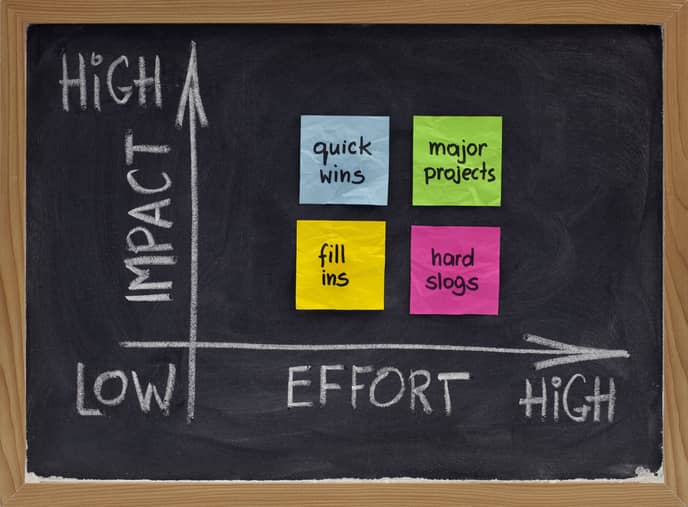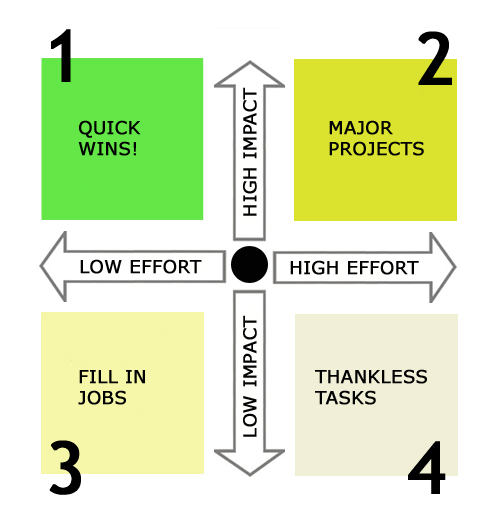Now’s the time we give thanks for family, friends and fantastic food (if you’re a good cook or lucky enough to know one). Football, too, if that’s your thing.
But what is there to be thankful about in your professional life? Well, we can’t help but be thankful for Lean and Six Sigma and the many ways they make our lives easier. In fact, there are enough tools and techniques to be thankful for that we found one for every letter in the word “Thanksgiving.”
If you want to avoid talking about politics around the Thanksgiving dinner table, and who doesn’t, then try throwing some of these topics out there for conversational fodder.
Consider it our holiday gift and way of saying: “Have a wonderful Thanksgiving!”
T. Theory of Constraints
The Theory of Constraints, as developed by Israeli businessman Eliyahu M. Goldratt, looks at processes through the lens of where constraints slow resource flow. In other words: what’s the weakest link in the chain of processes? These constraints can come in many varieties – poor design, the wrong tools, the right employees working in the wrong place, poor planning for materials, etc. – but it’s finding what they are that starts the process of finding solutions.
H. Heijunka
Heijunka involves combining different elements of Lean Six Sigma. This includes Takt Time, which is the measurement of how long it takes to manufacture a specific product, ship it and get it into the hands of a customer. The Heijunka method of manufacturing is then to only produce enough product to meet demand. In other words, don’t over manufacture something and end up with more stuff than you can sell.
A. Affinity Diagram
This tool is especially useful in brainstorming. The Affinity Diagram takes ideas that have commonalities and groups them together. So, after a brainstorming session, it would be used to group ideas into one place, bringing some order into what can be a chaotic pile of suggestions on many different topics.
N. Non-Value Adding
Non-value adding actions should be eliminated. It’s just that simple. Lean offers guidelines on what makes a step value-adding:
- It must change the form or function of the product or service
- It must be something the customer is willing to pay for
- It must be performed correctly the first time
Cooking the Thanksgiving meal is extremely value-adding toward the success of the day and the happiness of the end user (everyone who plans to eat). Your old uncle ranting about “these kids today” is pretty much a textbook case of non-value adding.
K. Kaizen
Kaizen means improvement in Japanese. For organizations, it means using a strategy of making small, incremental changes that lead to big results. Its success requires involvement by people at every level of the organization.
These are the places where wastes appear that need to be eliminated. Practitioners of Lean know these by heart, and so should you. They are:
- Transportation
- Inventory
- Motion
- Waiting
- Over-processing
- Overproduction
- Defects
G. Gemba Walk
The Gemba walk is something every manager is encouraged to take. A Gemba walk involves managers going to where frontline employees work and seeing for themselves what they do every day. This offers managers insight into the specific challenges their employees face and helps identify the root cause of a problem.
I. Interrelationship diagram
This diagram is used to show the causal relationship between two issues in an operation. In other words, how one action impacts another. Using this diagram to show all the interrelationships with an area that is having issues can quickly lead to finding the solution.
V. Value Stream Mapping
Value stream mapping, one of the key techniques in Lean Six Sigma, involves mapping out an entire process step-by-step and in detail. Only then can you determine what is value-adding and non-value-adding.
I. Input-Output Model
This model is used to measure all inputs and outputs in a process, and then the required processes to turn an input into an output. The goal is to reduce the number of processes only to those that are necessary.
N. Nominal Group Technique
This is a decision-making method used by teams to separate the most important items from the least important items. Not everyone agrees on this, of course, so a nominal group technique develops ways to reach consensus, such as giving each team member a limited number of votes (five is popular number).
G. Goals
OK, that’s not a tool or technique. But it’s what all the strategies involved in Lean Six Sigma are going to help you accomplish. After all, reaching your goals is the reason you got interested in reading about Lean Six Sigma in the first place!



